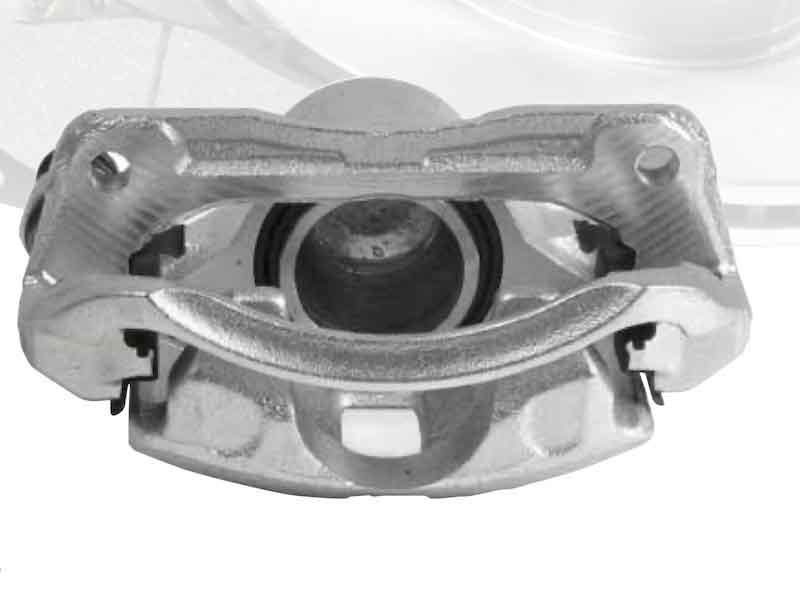Q: How do I ensure my topcoat or sealer not only maintains its cosmetic quality, but also its corrosion resistance?
 Adam BlakeleyA: There are six crucial parameters for proper application of sealers, which include concentration, pH, temperature, contamination level, water quality and drying temperature.
Adam BlakeleyA: There are six crucial parameters for proper application of sealers, which include concentration, pH, temperature, contamination level, water quality and drying temperature.
Concentration: Higher sealer concentrations invariably produce a thicker, more viscous solution. This viscosity correlates to the sealer’s adherence capacity, which translates to a thicker film on the part. Thicker sealers offer greater corrosion resistance. A sealer is analogous to the walls of a castle. The thicker the castle bricks the more difficult it is for the cannon balls (corrosive agents) to penetrate the walls and access the castle interior (metallic plate and substrate). A sealer is commonly preceded by a passivate/chromate solution that can often produce iridescence (rainbow effect), which can be muted and mellowed with a thicker sealer film. Higher concentrations do have some drawbacks, including a greater chance for residual marks to form when the sealer settles or pools from the downward force of gravity, called drip marks. Lower sealer concentrations can alleviate the presence of these drip marks, but may sacrifice other sealer characteristics such corrosion resistance and iridescent muting abilities. Some facilities have implemented a double dip wherein the parts are immersed or dipped two separate times with a hang period in between. The theory in this process is to build up thickness using two coats, one on top of the other, with the first acting as a primer, to diminish the presence of drip marks and iridescence while still maintaining corrosion resistance.
pH: Some sealers have very high pHs (often the inorganic types) and require very little pH maintenance, while others (typically of the mixed [organic and inorganic] or standard organic variety) require more pH maintenance and operate at generally lower pHs. There is often an ammonia emulsion in these “lower pH” sealers (mixed and organic types) designed to solubilize the resin components used in these systems. However, drag-in of acidic material from the passivate/chromate tank (due to poor rinsing) can cause instability. Ammonium hydroxide is added regularly to these ammoniated sealers to maintain pH and to prevent the emulsion from splitting and precipitating, bringing an end to that sealer’s useful life. Some facilities add ammonium hydroxide to their stagnant rinse prior to the sealer to neutralize any acidity from the passivate/chromate tank and to properly condition the parts preparing to contact the sealer.
Temperature: Excessively high temperatures beyond the tolerance limit of the sealer (often as low as 105-110°F) can drive the ammonia off, leading to sealer instability and ultimately precipitation. Excessively low temperatures (often less than 65-70°F) can be detrimental due to the creation of excessive solution viscosity preventing the sealer from accessing or wetting all areas of the parts, which leaves those unreached areas vulnerable to premature corrosion failure. Colder sealers also are more susceptible to drip marks.
Contamination: With any sealer, excessive amounts of contamination will inevitably express itself within the sealer on the part, typically as unsightly drip marks, especially if the dried film contains calcium, magnesium, chloride, sodium and other hard water salt ions. These salts leave a chalky, spotty residue behind, while heavier metals such as zinc, chrome, nickel and others can complex with the ammonia, causing it to fail to perform its initial resin-solubilizing duty and ultimately leading to the polymer ingredients turning gelatinous.
Water Quality: To avoid the previously mentioned issues, rinsing needs to figure prominently in the applicator’s mind. The rinse that directly precedes the sealer should be the cleanest, with water that does not exceed 50 microSiemens or 32 ppm of total dissolved solids (TDS). Salt ions are notoriously conductive and would compromise the very function and nature of the sealer as a wall/barrier for corrosive agents. Adding conductivity to an intentionally non-conductive sealer is like adding a secret door to your castle wall allowing unfettered access to the inside.
The use of RO, DI or very soft water is recommended because excessive amounts of hard water salts such as calcium and magnesium can introduce whiteness into the sealer as they form insoluble precipitates (carbonate and silicate salts) upon interaction with the other sealer ingredients. Black passivates are the most prominent offenders of this phenomenon.
Drying Temp: A drying time temperature that fails to reach at least 140-180°F with most sealers will be slow to fully dry and require more time to reach proper cure. A drying time of 10-20 minutes for organic and mixed sealers is often suggested to cure the sealer properly. Many applicators fail to expose parts to their dryers for this long, but extended times do correlate to better cure rates, which invariably increases the corrosion resistance of the sealers and overall cosmetic appearance. An improperly dried film also creates the potential for the sealer’s water resistance properties to be diminished.
Clearly, sealers (especially of the organic variety) need some tender love and care. Not only do they need to be analyzed regularly to ensure correct concentration, but their pHs should be monitored closely to maintain their integrity and stability. Sealers should also stay within their temperature ranges to ensure coherence and wettability. Keeping the sealer free of metal and salt ions is crucial, as is ensuring the dryer temperature and time is correct to produce a proper cure.
Adam Blakeley, MSF and CEF, is Technical Manager of the Eastern Region at MacDermid Enthone Industrial Solutions. Visit www.macdermidenthone.com



































